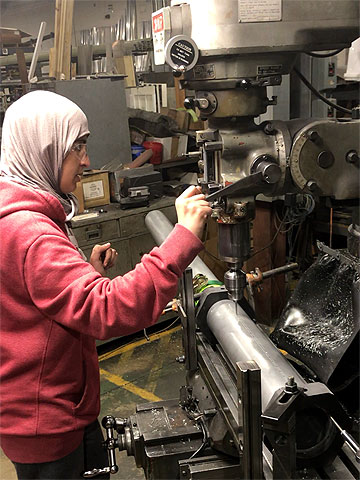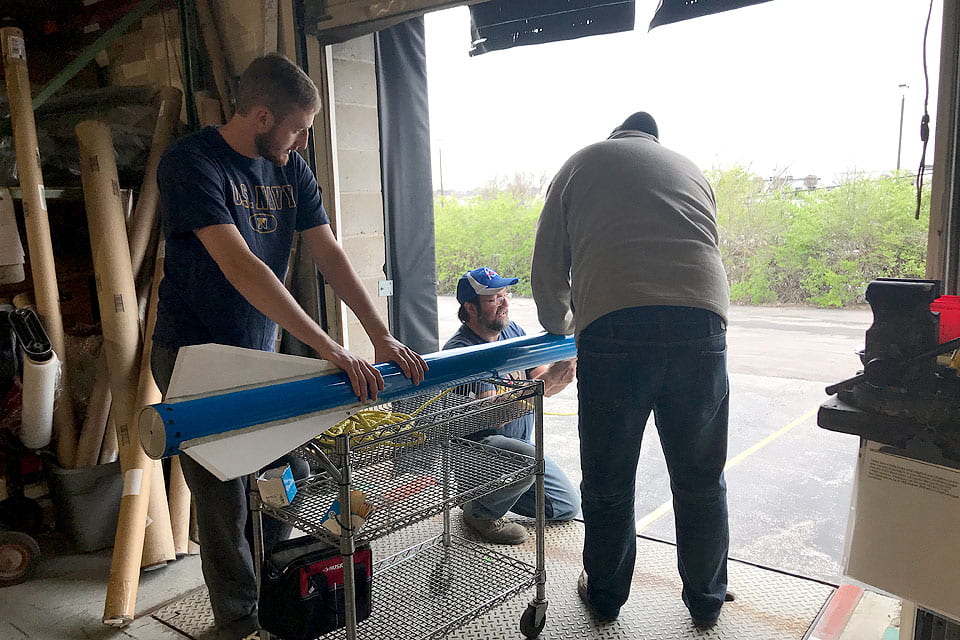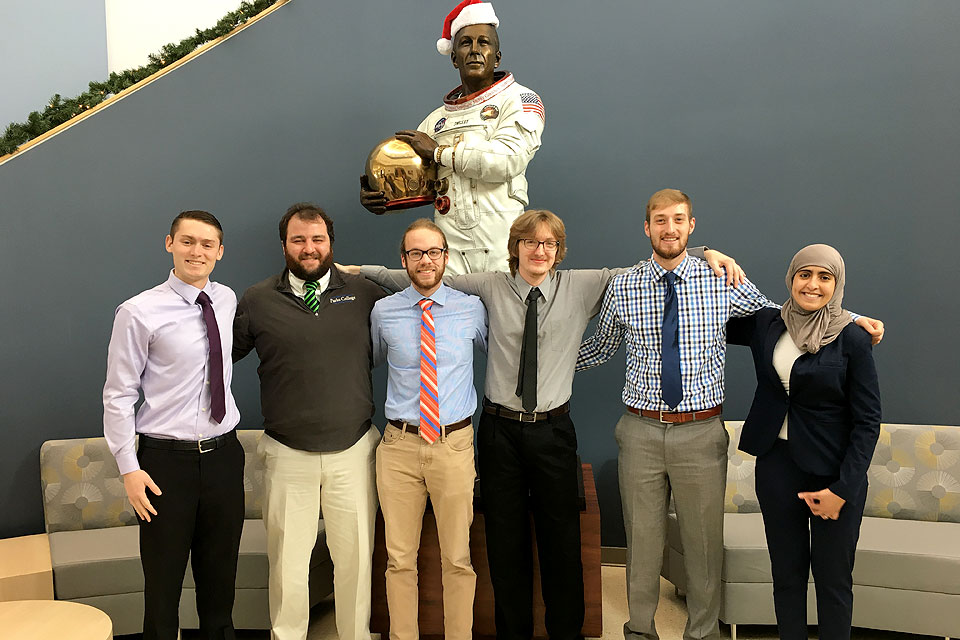Rocket Launch Attempts Record-Setting Flight to Honor SLU's Bicentennial
06/13/2018
To honor Saint Louis University’s bicentennial, a team from Parks College of Engineering, Aviation and Technology will try to go where no Billiken has gone before in an attempt to break the University’s rocket flight altitude record.
“SLU and Parks College specifically have a great history of aerospace engineering,” team leader Dan Reczek (Parks ’18) explained. “It seemed fitting for such a historic program within SLU that we do something to celebrate that.”
The idea for the project stemmed from a desire to incorporate Parks College’s 90 years of innovation into the larger history of SLU, team members said.
“Two hundred years ago, this wouldn’t have even been feasible,” Spencer Trefilek (Parks ’18) said. “But now it’s something very practical.”
The team of five students and recent SLU alumni will launch their rocket, Billiken One, at the Spaceport America Cup between Thursday, June 21, and Saturday, June 23. The launch will take place at Spaceport, New Mexico, a site used by spaceflight company Virgin Galactic that is billed as the world’s first purpose-built spaceport.

SLU’s Billiken One team includes Reczek, Trefilek, Ghadah Alhasan (Parks ’18), Kevin Farmer (Parks ’18) and Bill Cusick (Parks ’18). Reczek, now a graduate student at SLU, is overseeing the propulsion elements of the project. Farmer, also pursuing a graduate degree at SLU, leads the computational analysis component while Cusick handles the rocket’s recovery systems. Trefilek is the charge of the rocket’s electronic, or avionics, elements. Alhasan was the team’s structures lead.
Two other students, Aris Simsarian and Joe Deliso, both recent SLU graduates, conceived the project.
Billiken One will attempt to fly higher than previous SLU rockets, which reached heights of 20,000 feet or under. According to its makers, Billiken One will attempt to hit 50,000 feet when it flies.
The bicentennial blue and white rocket is just under 11 feet-long and weighs 120 pounds. It will feature SLU’s iconic fleur de lis and the University’s bicentennial logo when it lifts off. It will fly at Mach 2, a speed twice as fast as that of sound.
The project was approved by SLU’s bicentennial committee in September 2017 and the team got to work in January 2018. Along the way, the team worked with pencil and paper calculations and 3D models to design the rocket. They overcame challenges ranging from getting parts ordered in time to the more fundamental difficulties any rocket designer faces when building a creation capable of breaking the surly bounds of Earth.
“Gravity doesn’t really want you to go that high so it takes a lot of power to get there,” Reczek said. “On top of that, you need to have a support structure in the vehicle to actually be able to withstand the forces that are required to get that high.”
The team also grappled with translating their design concepts into real parts that worked together, getting a chance to apply their classroom learning to solving problems engineers face in real-time.
“One of the reasons it’s good to have actual engineering experience on an actual project is that you design parts separately,” Reczek said. “You’re taught to design them, and to design things separately, but they actually have to work together, and it’s really important to know how those parts interact.”
The team found that out by running numerous tests, including a pressure test that ended with two parts not interacting as they should have. Trefilek said the scope of the project brought what he’d learned in Parks classrooms into focus – and affirmed he’d picked the right career path while studying at SLU.
SLU and Parks College specifically have a great history of aerospace engineering. It seemed fitting for such a historic program within SLU that we do something to celebrate that.”
Dan Reczek (Parks '18), SLU graduate student and team leader for the Billiken One bicentennial rocket launch
“This is probably the biggest project I’ve ever worked on and definitely the most responsibility,” Trefilek noted. “It’s really solidified that I made the right choice to be an aerospace engineer. If this is just the tip of the iceberg, I can’t wait to see what’s next.”
The team also benefited from the advice of their faculty mentor, Raymond LeBeau, Ph.D., and adjunct professor Douglas Schwab, a former systems engineer at Boeing.
As the clock ticks down to their launch in New Mexico’s Jornada de Muerto desert basin, the team is putting the last touches on what they hope is their contribution to SLU’s next chapter.
“We really want to get SLU’s name out there and to show everyone we can do this,” Trefilek said. “Once you see an 11-foot-tall rocket – once you see all the parts come together, that’s very rewarding.”
Founded in 1818, Saint Louis University is one of the nation’s oldest and most prestigious Catholic institutions. Rooted in Jesuit values and its pioneering history as the first university west of the Mississippi River, SLU offers nearly 13,000 students a rigorous, transformative education of the whole person. At the core of the University’s diverse community of scholars is SLU’s service-focused mission, which challenges and prepares students to make the world a better, more just place.
Video by Stephanie Mueller, University Marketing and Communications.
Story by Amelia Flood, University Marketing and Communications.

